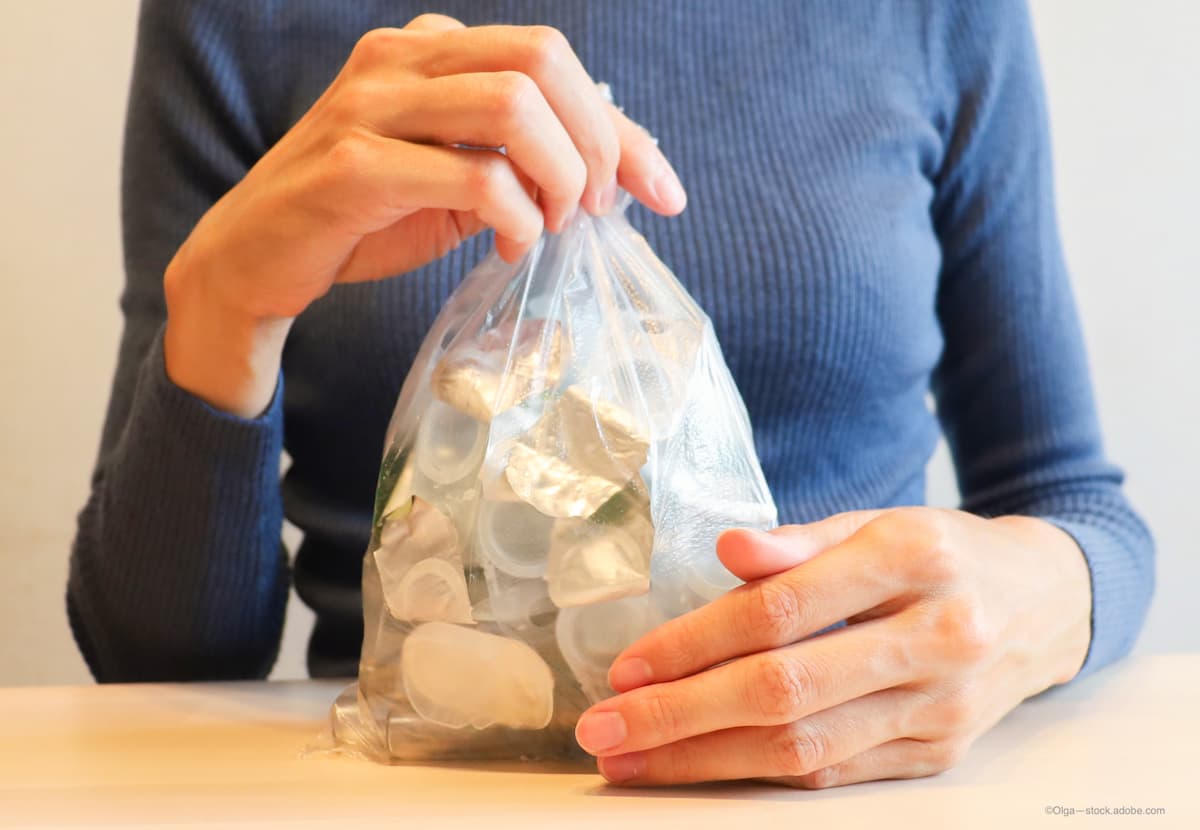76M+ units of eye care materials recycled through Bausch + Lomb programs
ONE by ONE and Biotrue Eye Care Recycling programs from Bausch + Lomb have collected over 464,100 pounds of used contact lens materials that would have otherwise been sent to a landfill.
Experts estimate that 6 to 10 tons of eye care waste end up in waterways each year. (Image credit: Adobe Stock/©Olga)

To celebrate America Recycles Day, Bausch + Lomb has announced that 76,645,000 units–which is an impressive 464,100 pounds–of eye care materials have been recycled via the ONE by ONE and Biotrue Eye Care Recycling programs.1 Eye care materials include used contact lenses, contact lens blister packs, lens cases, contact lens solution bottle caps, empty eye drop bottles, and more.
Eye care and lens care materials often aren’t recycled via standard facilities due to the type of plastic they are made of. The size of the materials are also a challenge for most facilities, which means many are thrown into the trash and eventually end up in landfills and waterways. An estimated 6 to 10 metric tons of contact lenses end up in wastewater each year in the United States alone.2 Not only is this number staggering, but it is preventable–or at least reducible.
“My patients appreciate being able to recycle their used eye health materials through the Bausch + Lomb recycling programs in an environmentally responsible way,” Jennifer Tsai, OD, from LINE OF SIGHT in New York, said in a press release. “It allows them, and our practice, to be part of the solution.”
Since launching in November 2013, the ONE by ONE Recycling program has collected more than 76 million units whereas the more recent Biotrue Eye Care Recycling program (launched in April 2021) has processed 645,000 units.1 While the ONE by ONE Recycling program focuses on contact lenses, blister packs, and top foils, the Biotrue Eye Care Recycling program collects single-dose eye drop units, lens cases, lens solution caps, and all Biotrue-branded eye drop bottles. Contact lens solution bottles can be recycled through standard facilities.
“As a result of the contributions of eye care professionals, patients and consumers, these award-winning programs continue to help keep recyclable plastic and aluminum eye health packaging materials out of landfills and oceans,” Amy Butler, vice president of Global Environment, Health, Safety and Sustainability at Bausch + Lomb, said in a press release.
To learn more about the Bausch + Lomb ONE by ONE Recycling programs, including how your practice can participate, visit the website. For more information on the Biotrue Eye Care Recycling program, visit the website. For those in Canada, explore the Every Contact Counts program.
References
1. Bausch + Lomb Reports More Than 76 Million Units of Contact Lenses, Lens Care and Eye Care Materials Collected Through ONE By ONE and Biotrue® Eye Care Recycling Programs. Bausch + Lomb. Published November 15, 2023. Accessed November 15, 2023. https://www.bausch.com/news/?id=191
2. The environmental cost of contact lenses. ACS. Published August 19, 2018. Accessed November 15, 2023. https://www.acs.org/pressroom/newsreleases/2018/august/environmental-cost-of-contact-lenses.html
Newsletter
Want more insights like this? Subscribe to Optometry Times and get clinical pearls and practice tips delivered straight to your inbox.